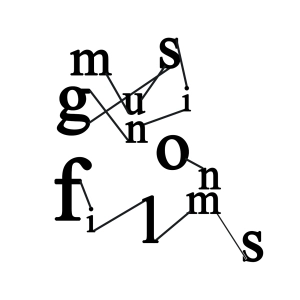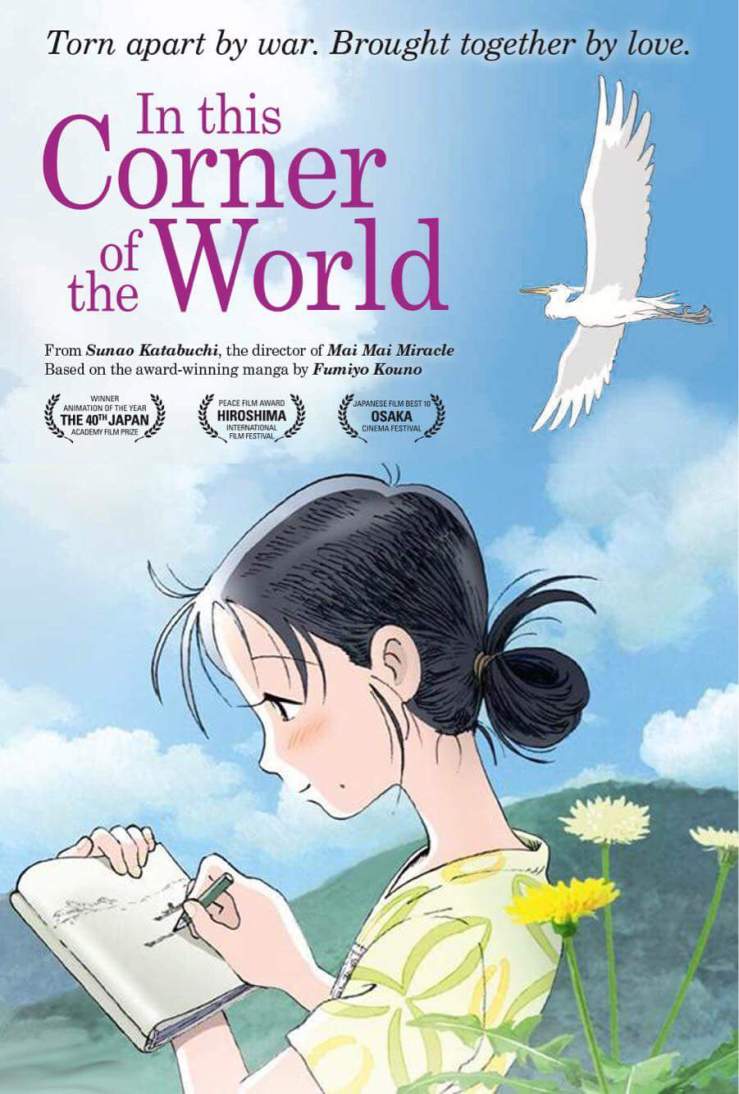
Alongside Murnau, Lang may be one of most influential voices of Weimar cinema. Lang innovated: Metropolis (1927) presented a spectacular vision for the future of science fiction, combining sets, models, mirror effects, glass plates and multiple exposure to spectacular effect. As Hollywood tried to find aesthetic utilisations for sound cinema, from the musical performances in The Jazz Singer (1927) to the cries of the crowd in The Man Who Laughs (1928), Lang used sound radically in M (1931), from Beckert’s signature whistle to a kangaroo court demanding justice. In exile, Lang relished in developing film noir’s shades of grey.
Weimar cinema rose from the ruins of war where others struggled to survive. Germany built its infrastructure through the state-sponsored consolidation of UFA, centralising its assets. Its cinema had reach: Das Cabinet des Dr. Caligari (1920) found audiences in Paris and London, as Europe began to recover from war. But Weimar cinema has implications few others do. As Siegfried Kracauer argues in his influential thesis From Caligari to Hitler (1947), the nation’s cinema symbolised its monologue intérieur: inaccessible layers of the German mind. Kracauer, part of the Frankfurt School alongside Adorno, Horkheimer and Benjamin, began questioning the role of the passively consumed mass media upon masses.
As Lang told director William Friedkin in a 1974 interview, he had watched his first film in Brussels around 1917/18, a film about the French Revolution. Lang was wounded fighting in the Austrian army, feeling a duty to serve. As a dramaturge, he turned scripts around in 4 days, over a glass of wine in the evening, working alongside wife Thea von Harbou on the screenplay for The Indian Tomb (1921). Der müde Tod was Lang’s follow-up to his first major work, Die Spinnen (1919), and has largely remained an unacknowledged lesser work. But Lang sets a high bar, and Der müde Tod is up there with his finest.
Although Lang’s faith was never strong, aspects of his Catholic upbringing pervade Der müde Tod. Metropolis brought the mythical Tower of Babel to life, embodying the cathedral sculptures of the Seven Deadly Sins. The morality of M touches upon questions of worth that pervade criminology, theology and the very fabric of humanity. Der müde Tod, through the idea “love is strong as death”, draws upon the Biblical Song of Solomon, as a young maiden takes a suicidal potion to bargain with Death, wanting only for her fiancé to return. Der müde Tod is rife with symbolism: the maiden ascends white steps through a church door, finding herself in a room of candles. Each flame burns out, representing life, evoking the light of God from Christian tradition. In spectacular effect, Death cradles a newborn in his arms, only to dissipate as the young flame burns out. In its Arabian episode, Lang suggests universality to faith: during Ramadan celebrations, a mosque’s caliphate contends with infidel the Frank as they fight to the death.
The romanticism of Der müde Tod, as an anachronistic small, German village met by the embodied figure of Death may seem familiar, emerging from gothic tradition. In Nosferatu (1922), Count Orlok haunts the village of Wisborg, laying death in his wake. In Faust (1926), Mephisto raises his cloak over a village, leaving only darkness; Faust bargains, but refuses to fall to temptation. In his massively popular young adult novel The Book Thief (2005), Zusak conforms to this tradition, using the first person perspective of Death as omniscient narrator amid the bloodshed of World War II. Zusak’s Death contends neutrality: “I most definitely can be cheerful. I can be amiable. Agreeable. Affable. And that’s only the As.” Lang’s Death never agrees to mortality, but acts upon its behalf.
As Tom Gunning argues in his analysis in The Films of Fritz Lang (2000:28), the Death of Der müde Tod represents a breakdown of the act of mourning in the wake of World War I, a surrender to death, invoking Freudian psychoanalysis. World War I concluded only three years beforehand, wounding Germany’s spirit, military and collapsed empire. In Kracauer’s argument, a Germany caught between “the cataclysm of anarchy or a tyrannical regime” resorted to “the ancient concept of Fate”, creating a “majestic event that stirred metaphysical shudders in sufferers and witnesses alike.” (1947:89) Lang’s humanised agent of Fate supports tyranny, emphasising the “irrevocability of Fate’s decisions.” (1947:91) Though Lang’s Death suggests predestiny, as he tells in the Friedkin interview, he never believed in it: “fate is something that you make out of your life.” Although Lang never draws explicit connection, he recalls seeing posters in Berlin of man dancing with death.
Lang’s Death is not our traditional image: he has no skeleton face or cloak, adapting to black clothing, a hat and an emotionless stare, riding his carriage. As the clock strikes 12, amid a bell-ringer’s announcement, generations appear as ghostly apparitions through a wall, souls still haunting this Earth. For Luis Buñuel, the scene in the cemetery proved an inspiration, writing that “this film spoke to something deep in me; it clarified my life and my vision of the world.” Lang poses a moral question to the value placed upon life. The maiden across the film’s episodes seeks a person to take her fiancé’s place, arguing with those with few days left: the beggars, infirm, elderly. But for all their days and weeks, life remains valuable. Death reunites her with her fiancé: her soul lifts away from her body as apparition, meeting with her fiancé’s soul upon the fields of a spiritual realm. Der müde Tod’s conclusion draws parallels to the ending of Intolerance (1916), in the fashion of Malick’s The Tree of Life (2011): the victims of conflict emerge together in angelic clouds and love, feeling death no longer.
Lang’s films often represent conflict with authority. As Kracauer argues, Weimar cinema questioned “what might happen if tyranny were rejected as a pattern of life” (1947:88). In Metropolis, Lang depicts the working class in subterranean factories, in revolution against industrialists. M contends with forces controlling the city: police, politicians, criminals and business owners. Though Lang met with Kracauer many times at MOMA, unaware of his book, Lang largely rejected Kracauer’s thesis. As he told Friedkin, he felt his book “did a lot of damage, especially for young people who believe in it”. Lang’s Death acts within a world controlled by man: within our world, going into land ownership buying a garden next to a graveyard. The village’s council are caught in unending, petty debates, refusing to close matters.
Through its six verses, Der müde Tod adopts a fable-like, poetic structure. As Gunning writes, its verses acts as a device in a struggle with a “systematic order”, where Lang’s power as director commands a “Destiny-machine” in a “battle to control the narrative structure”, using the Hall of Flames as a switchboard. Gunning compares Lang to Méliès, controlling dissolves and the temporality of the editing. Lang interweaves tales of Arabia, China and Venice, removed from the confines of time and space, between cultural barriers as Intolerance did with ancient Babylon, Palestine, France and the United States. Lang presents the universality of death and love: in Arabia, the Caliph sentences Zobeide’s lover, the Frank, to death; in Venice, Death is embodied as a servant of Fiametta, forming a poisoned dagger against her lover; in China, the Emperor’s archer plots to kill Liang, lover of Tiao-tsien. Though Caligari may be the most overt example of expressionism, Weimar cinema was versatile, from costume dramas to detective stories to social dramas and comedies.
Lang never presents an authentic slice of other cultures, but relies upon the performative and the theatrical, using yellowface and brownface; A Hi, a Chinese magician, has villainous talons, an Orientalist stereotype. (Lang’s Arabian vision influenced both early versions of The Thief of Baghdad (1924/40).) Lang is interested in adventure, with swordfights and magic carpets, princesses and castles. Without the limitations of sound cinema, Lang relies on visual spectacle within a medium emerging from vaudeville. Lang creates impressive sets, just as Griffith recreated ancient Babylon with thousands of extras. As Kracauer enthuses, “the pictorial visions are so precise that they sometimes evoke the illusion of being intrinsically real”: Venice became a “drawing brought to life”, whilst the carnival procession “resuscitates genuine Renaissance spirit”. Lang uses calligraphy evoking Arabic and Mandarin script, setting the scene for each culture.
The Chinese segment embraces spectacle: the magician turns people into pigs, cactuses and elephants, creating a walking miniature army from stone; animates text within the air. Weimar cinema animated text in a way few others had until modern digital typography, from “love” moving across the mountains in Faust to “I must become Caligari” upon the screen in Caligari. In a yellow-tinted scene, Lang flies a magic carpet through the air, simultaneously embracing effects whilst telling a narrative. Years on, Lang applied similar genius to the visual spectacle of the modernist architecture of Metropolis. Disappointingly, Lang’s colour timing betrays inconsistency: the flame of the fire of the burning building pierce out in bright red, but cuts in the following shot to the blue of the sky at night. Death watches out at us in bright orange.
Though Der müde Tod will never be Metropolis or M, it remains a strong early point in Lang’s seemingly insurmountable career, now allowed a new period of reappraisal thanks to a new release from Masters of Cinema.



You must be logged in to post a comment.